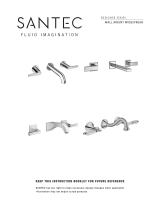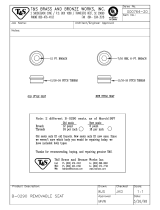
3
ATTENTION
–
Before using the rail drilling, carefully read the instructions contained in this manual.
SAVE THESE INSTRUCTIONS: this manual contains important safety and operating
instructions for the drilling machine.
–
The degree of protection of the drilling machine against moisture is classied
“ordinary" (EN 50144-1 Standard).
Do not expose the rail drilling to rain and moisture; possible inltrations of water
inside the electric motor determines the risk of electric shocks.
Mobile electric devices used outdoor must be connected to the
supply by inter-
posing a safety interrupter for breakdown current.
–
DISCONNECT always the power supply when servicing the drill:
before removing the broach cutters, spiral bits, positioning templates etc.
–
During drilling keep your hands outside the danger area.
–
Always wear protective glasses and working gloves.
–
Avoid wearing clothes which may present a risk to personal safety.
USER INFORMATION
in accordance with “Directives 2002/95/EC and 2002/96/EC rgarding
the reduction of hazardous substances in electrical and electronic equipment, including the
disposal of waste”.
The ‘Not in the bin’ symbol above when shown on equipment or packaging means that the
equipment must, at the end of its life, be disposed of separately from other waste.
The separate waste collection of such equipment is organised and managed by the manufactu-
rer. Users wishing to dispose of such equipment must contact the manufacturer and follow the
prescribed guidelines for its separate collection.
Appropriate waste separation, collection, environmentally compatible treatment and disposal
is intended to reduce harmful environmental eects and promote the reuse and recycling of
materials contained in the equipment.
Unlawful disposal of such equipment will be subject to the application of administrative san-
ctions provided by current legislation.
Following information applies
in member states of the
European Union:






















